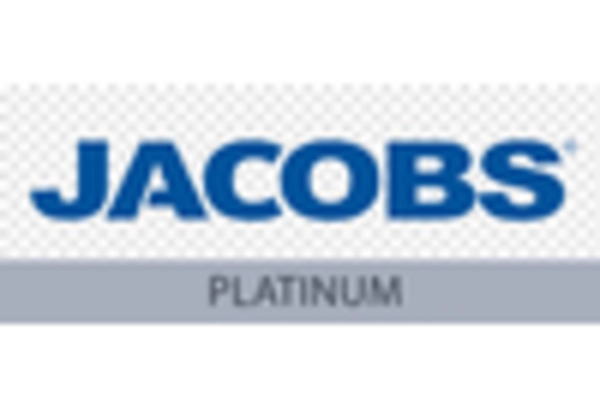Increased Government Investment
The Highway Street and Bridge Construction Market is experiencing a surge in government investment aimed at enhancing infrastructure. Governments are allocating substantial budgets to improve road networks and bridge systems, recognizing their critical role in economic development. For instance, recent data indicates that infrastructure spending has increased by approximately 10% in the last fiscal year, reflecting a commitment to modernizing transportation systems. This influx of funds is likely to stimulate growth within the Highway Street and Bridge Construction Market, as projects are initiated or accelerated. Furthermore, public-private partnerships are becoming more prevalent, allowing for innovative financing solutions that can further bolster investment in infrastructure projects. As a result, the market is poised for expansion, driven by the need for safer and more efficient transportation networks.
Urbanization and Population Growth
The Highway Street and Bridge Construction Market is significantly impacted by ongoing urbanization and population growth trends. As urban areas expand, the demand for efficient transportation infrastructure intensifies. Recent statistics reveal that urban populations are projected to increase by over 2 billion by 2050, necessitating the development of new highways and bridges to accommodate this growth. This urban expansion creates a pressing need for improved connectivity and accessibility, driving investments in the Highway Street and Bridge Construction Market. Moreover, as cities evolve, there is a growing emphasis on integrating smart technologies into infrastructure, further enhancing the need for construction projects that meet modern demands. Consequently, the market is likely to experience sustained growth as urbanization continues to shape infrastructure needs.
Technological Innovations in Construction
Technological advancements are reshaping the Highway Street and Bridge Construction Market, introducing new methodologies and tools that enhance efficiency and safety. Innovations such as Building Information Modeling (BIM) and advanced project management software are streamlining project execution, reducing costs, and improving timelines. Data indicates that projects utilizing these technologies can see a reduction in construction time by up to 20%. Additionally, the integration of drones and automated machinery is revolutionizing site surveys and monitoring, allowing for real-time data collection and analysis. As these technologies become more accessible, they are likely to be adopted widely across the Highway Street and Bridge Construction Market, leading to improved project outcomes and increased competitiveness among contractors.
Increased Freight and Transportation Needs
The Highway Street and Bridge Construction Market is also influenced by the increasing freight and transportation needs driven by e-commerce and global trade. As consumer demand for goods rises, logistics and transportation networks must adapt to accommodate higher volumes of freight traffic. Recent data indicates that freight traffic is expected to grow by approximately 25% over the next decade, necessitating the expansion and upgrading of existing highway and bridge infrastructure. This trend presents a substantial opportunity for the Highway Street and Bridge Construction Market, as investments in roadways and bridges become essential to support efficient supply chains. Additionally, the focus on enhancing freight corridors may lead to targeted projects that prioritize the movement of goods, further stimulating market growth.
Rising Demand for Sustainable Infrastructure
The Highway Street and Bridge Construction Market is increasingly influenced by the rising demand for sustainable infrastructure solutions. Stakeholders are prioritizing eco-friendly materials and construction practices to minimize environmental impact. Recent trends suggest that approximately 30% of new projects are incorporating sustainable practices, such as the use of recycled materials and energy-efficient designs. This shift not only addresses environmental concerns but also aligns with regulatory frameworks that promote sustainability. As cities and regions strive to meet sustainability goals, the Highway Street and Bridge Construction Market is likely to adapt, leading to innovative construction methods and materials. This focus on sustainability may also attract new investments, as environmentally conscious funding sources become more prevalent, further driving growth in the market.

















Leave a Comment